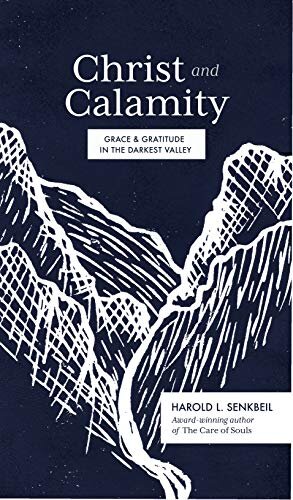Christ and Calamity: Grace & Gratitude in the Darkest Valley
Harold L. Senkbeil
Lexham Press (2020). 184 pp.
Book Review
Harold Senkbeil has written a helpful resource for the pastor’s toolkit. In this slim, beautifully published volume, Senkbeil weaves together reflections on what it means to face suffering as a Christian. Writing in an humble, earthy tone, Senkbeil taps into salient scriptural passages, offering sage pastoral advice, often using illustrations from his own life and ministry to make a point. This book is not written for an academic audience but is rather accessible to anyone who is wanting a gentle entry-point into thinking on persevering with Christ through life’s difficult patches.
After a brief invitation to the reader, the book moves to an introductory chapter that tells the story of its conception in the earliest days of the COVID-19 pandemic while Senkbeil was at his home in Wisconsin prayerfully observing all that was taking place. He makes clear that this is not a book about COVID-19, however, but writes instead that, “This is a book about you. Rather, it’s about you and God—and how you relate to him in times of calamity. To be exact, this is a book about God’s faithfulness in face of uncertainty” (pp. 3-4). Speaking in a voice-directed to the reader, Senkbeil then moves through the next ten chapters with brief meditations on difficult situations and Christ’s presence within them. These include, “When You Are Faithless, Christ Is Your Faithfulness”, “When You Are Weak, Christ Is Your Strength”, and “When You Are Dying, Christ Is Your Life.” There is a perceptible Lutheran vibe throughout the whole text.
The volume is physically small (4x7) and so while each chapter is about ten pages long, each is quite short, and has the feel of mini homily. Besides this, Senkbeil liberally quotes Scripture, which makes up a significant portion of the content of the book.
The last 25 pages or so of the book feature a few orders of prayer (for morning, anytime, and evening) as well as the words to the hymn “Jesus, Priceless Treasure” printed in full. The prayers are drawn from a variety of sources but will feel familiar to anyone used to praying with the Book of Common Prayer.
Each chapter carries a distinct theme, but they begin to bleed into one another, often coming back to several motifs such as the way Christ is present in suffering, how lament is acceptable to God, how God reveals his glory amidst suffering, and how ultimately, he will redeem it in the world to come. For example, though Senkbeil writes specifically about Christ’s nearness to those suffering (in the chapter (“When You Are Alone, Christ is With You”), this idea has already been treated in the chapter “When You Are Weak, Christ Is Your Strength” in which after quoting Lamentations 3:32-33, he notes, “That’s the awe-filled secret concealed within affliction: God is right there in the middle of it” (60).
This was not by any means a meaty book and I would have been disappointed if I were expecting a thorough and nuanced treatment on suffering with Christ. Even within the genre of popular books that touch on life’s losses, Tish Harrison Warren’s Prayer in the Night or Kate Bowler’s Everything Happens for a Reason are just as accessible and far more compelling.
Still, the book is affordable and is an easy sell for a parish study, especially during a penitential season such as Lent or Advent. Based on the reviews, I decided to purchase this for use over the course of Lent with my parish before having a copy myself. A context like this is perhaps the only place the book shines. It was an important springboard for our small group that included people with no postsecondary education to those with graduate degrees. There is not enough substance in the book to use it over more than three or four session (four felt like a stretch for us) only because so many themes repeat themselves throughout the text. It would be an even better study companion if Senkbeil had included a few discussion questions at the end of each chapter, and I think this would have helped him sharpen the contribution he was wanting to make in each.
Overall, given the price, I would recommend this book for a small group or congregational study. Because of the occasional nature of the work (with frequent mentions of the pandemic) it will date itself quickly. Plan to use it this year or next.
Cole Hartin is an Assistant Curate at St. Luke’s Anglican Church in Saint John, New Brunswick. He earned his PhD from Wycliffe College/University of Toronto. Cole is a member of the St. Basil Fellowship of the Center for Pastor Theologians.




